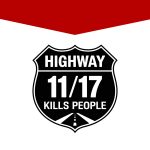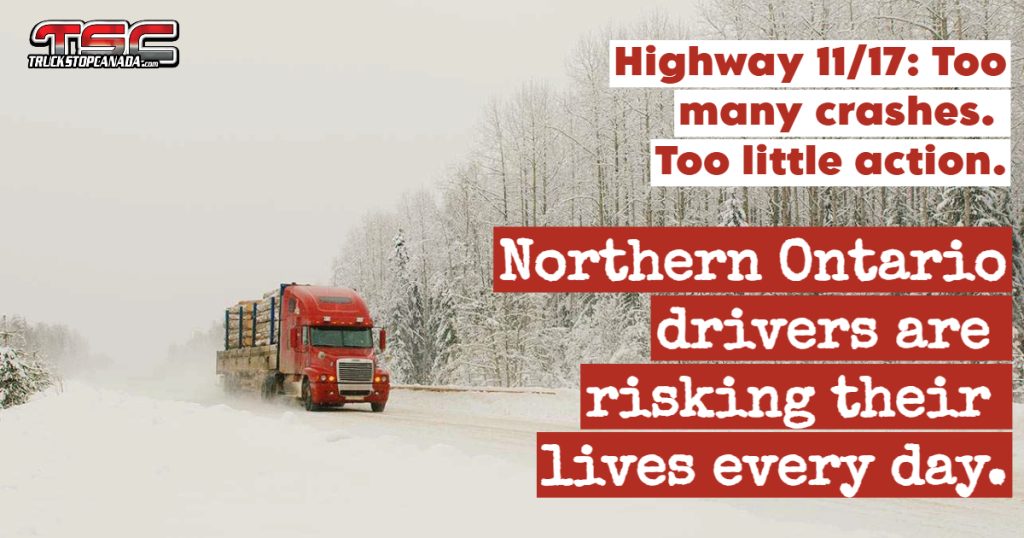Ontario Premier Doug Ford has reaffirmed his support for twinning key highways across Northern Ontario, particularly the most dangerous sections of Highways 11 and 17.
According to Ford, expanding the Trans-Canada Highway is essential to improving road safety and meeting the needs of remote communities and freight transport in the region.
The province has already committed to twinning the portion of Highway 11/17 between Thunder Bay and Nipigon. Ford stated that an additional 16 kilometres of this stretch should be completed by the end of the year, in addition to work already underway. In April 2022, a $107-million contract was awarded for the construction of a 13.2-kilometre section between Highway 587 and Pearl, scheduled for completion by 2026.
However, little progress has been made between Thunder Bay and Kenora, or east of Nipigon, where the highway remains a two-lane, undivided roadway—with one lane in each direction and no physical separation. Highway 11, between Nipigon and North Bay, shares the same layout, despite rising traffic volumes and a growing number of serious collisions that continue to raise concern in the region.
Ford maintains that road safety remains a top priority for his government. He also pointed out that other areas, such as the Sudbury–Toronto corridor, include similarly risky two-lane segments. Meanwhile, Highway 69 is undergoing a major expansion to four lanes, a $500-million project that will upgrade another 68 kilometres of highway.
In comments reported by BayToday.ca, the premier added that many people living in southern Ontario cities have little understanding of how harsh and dangerous road conditions in the North can be—especially during winter. Ford said he experienced those realities firsthand during the last election campaign, while travelling across the region in heavy snow.
At the same time, plans are underway to upgrade the Thunder Bay Expressway. The Ministry of Transportation is expected to issue a request for proposals in September 2025 for the project’s detailed design. However, construction cannot begin until the Northwest Arterial Road—connecting Dawson Road to Golf Links Road—is completed.
2+1 Highway Model: A Realistic Option for the North?
Meanwhile, the Federation of Northern Ontario Municipalities (FONOM) is proposing a faster and more cost-effective alternative to full highway twinning: the 2+1 road model, widely used in Europe. This configuration includes a central alternating passing lane, with physical separation between directions.
FONOM describes the 2+1 model as a realistic way to improve specific segments of Highways 11 and 17—particularly between North Bay and Cochrane, and on Highway 17 between Renfrew, Sudbury and Kenora.
A Budget Fix That Costs Lives?
However, not everyone agrees. The citizen group “Hwy 11/17 Kills People – La route 11/17 tue des gens” strongly opposes the 2+1 model, calling it dangerous and inadequate. They argue that in these short passing zones, it’s not only cars that race to overtake before the lane disappears—but also heavy trucks competing against each other, creating frustration, aggressive driving and unnecessary risk in an already vulnerable environment.
 On top of that, the group highlights the lack of proper training among some new truck drivers—a known and recurring issue in the industry. According to them, this combination of poor training, winter weather and poorly adapted infrastructure creates an explosive mix on roads that are already difficult to navigate.
On top of that, the group highlights the lack of proper training among some new truck drivers—a known and recurring issue in the industry. According to them, this combination of poor training, winter weather and poorly adapted infrastructure creates an explosive mix on roads that are already difficult to navigate.
The group accuses decision-makers of severely underestimating the on-the-ground reality and continuing to expose northern residents, truckers and communities to preventable dangers.
While full highway twinning may seem expensive, members of the group insist that safety should never be a budget line to cut. In their view, only a continuous four-lane divided highway can truly prevent serious accidents and meet the needs of modern freight transport. Until such a solution is implemented, they warn, tragic outcomes will keep piling up.
Read More :















